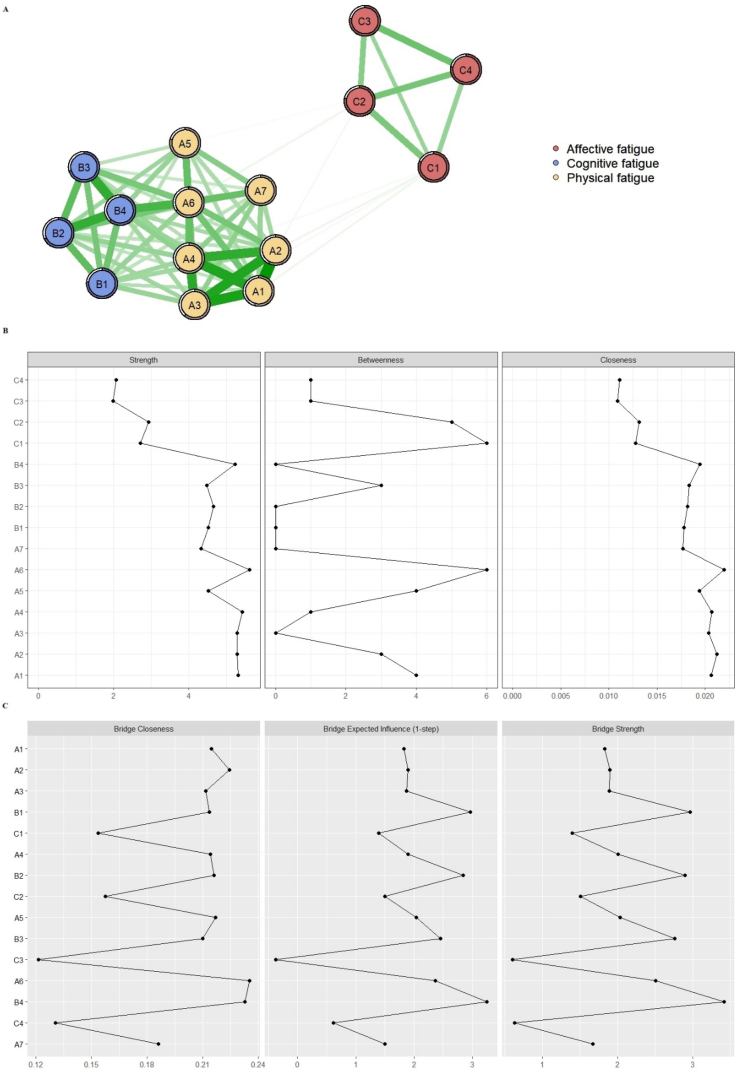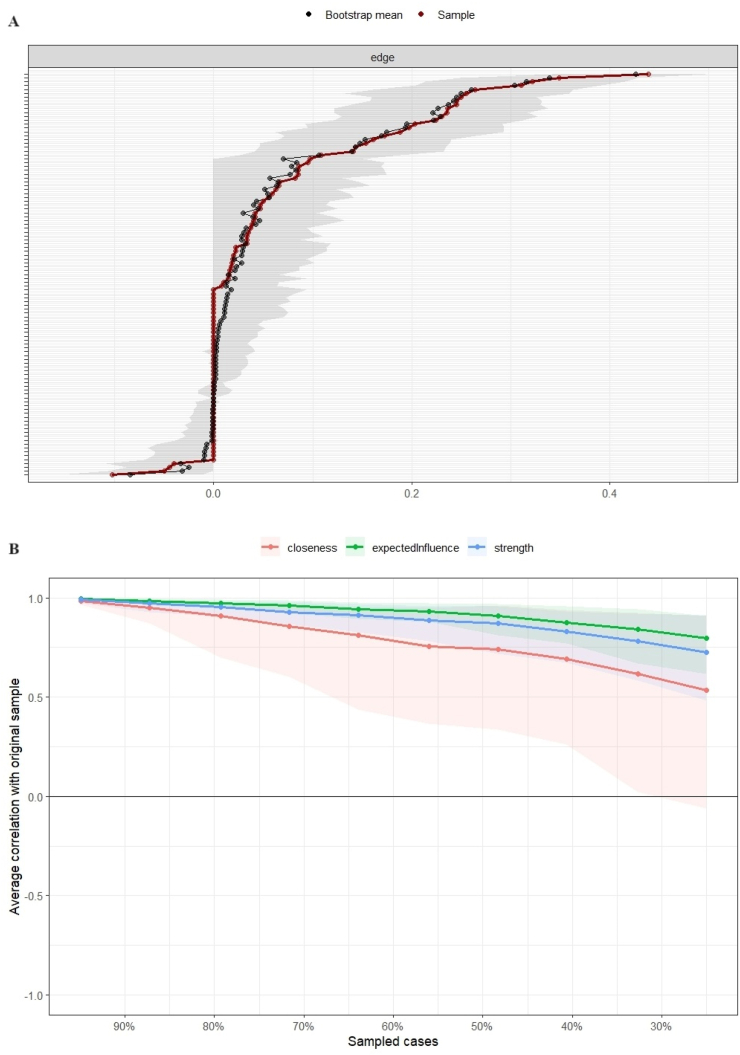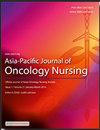Network analysis of fatigue symptoms in Chinese patients with advanced cancer
IF 2.8
3区 医学
Q1 NURSING
引用次数: 0
Abstract
Objective
This study was aimed at investigating the network structures of fatigue symptoms in patients with advanced cancer, with a focus on identifying the central symptom—an aspect crucial for targeted and effective fatigue symptom management.
Methods
In this cross-sectional study, patients with advanced cancer were recruited from the cancer treatment center of a tertiary hospital in China between January and December of 2022. Symptom occurrence and severity were assessed with the Cancer Fatigue Scale. Network analysis was conducted to explore the network structure and identify the core fatigue symptoms.
Results
The study included 416 patients with advanced cancer. Lack of energy (2.25 ± 1.24), lack of interest in anything (2.20 ± 1.22), and lack of self-encouragement (2.03 ± 1.25) were the most severe fatigue symptoms and belonged to the affective fatigue dimension. In the overall network, reluctance (rs = 5.622), a heavy and tired body (rs = 5.424), and tiring easily (rs = 5.319) had the highest strength values. All these core symptoms were classified within the physical fatigue dimension and remained stable before and after adjustment for covariates.
Conclusions
This study identified reluctance, a heavy and tired body, and tiring easily as the core fatigue symptoms in patients with advanced cancer, thus providing valuable insight to help clinical nurses formulate more effective symptom management strategies. Future interventions could assess the efficacy of targeting the central symptom cluster in alleviating other symptoms and patient burden.



中国晚期癌症患者疲劳症状的网络分析
目的:本研究旨在探讨晚期癌症患者疲劳症状的网络结构,重点确定中心症状,这是有针对性和有效的疲劳症状管理的关键方面。方法:在这项横断面研究中,于2022年1月至12月在中国某三级医院癌症治疗中心招募晚期癌症患者。用癌症疲劳量表评估症状的发生和严重程度。进行网络分析,探索网络结构,识别核心疲劳症状。结果:研究纳入416例晚期癌症患者。精神不振(2.25±1.24)、对任何事物缺乏兴趣(2.20±1.22)、缺乏自我激励(2.03±1.25)是最严重的疲劳症状,属于情感性疲劳维度。在整个网络中,磁阻(r s = 5.622)、重累体(r s = 5.424)和易累体(r s = 5.319)的强度值最高。这些核心症状均被划分在身体疲劳维度内,并在协变量调整前后保持稳定。结论:本研究确定了不情愿、身体沉重疲倦、易疲倦是晚期癌症患者的核心疲劳症状,为临床护士制定更有效的症状管理策略提供了有价值的见解。未来的干预措施可以评估针对中心症状群在减轻其他症状和患者负担方面的效果。
本文章由计算机程序翻译,如有差异,请以英文原文为准。
求助全文
约1分钟内获得全文
求助全文
来源期刊

Asia-Pacific Journal of Oncology Nursing
Multiple-
CiteScore
2.80
自引率
11.10%
发文量
136
审稿时长
31 days
 求助内容:
求助内容: 应助结果提醒方式:
应助结果提醒方式:


